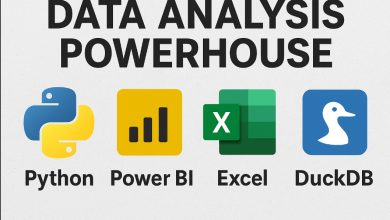Technology Transfer
Your 2025 Blueprint to Supercharge Small Business Innovation with Federal R&D

Technology Transfer : Your 2025 Blueprint to Supercharge Small Business Innovation with Federal R&D
Imagine accessing NASA’s materials science breakthroughs, DOE’s energy storage patents, or NIH’s biotech discoveries—without a million-dollar R&D budget. For small businesses, Technology Transfer is the ultimate growth accelerator: a legal pathway to evaluate, license, and commercialize cutting-edge federal inventions. Here’s how to turn taxpayer-funded research into your competitive advantage while extending your R&D team.
Why Technology Transfer is a Small Business Game-Changer in 2025
-
The R&D Equality Shift
-
95% of federal lab technologies sit unused (GAO Report)
-
Licensing costs 50-90% less than independent R&D (Kauffman Foundation)
-
72% of licensees are small businesses (NIH Statistics)
-
-
The 2025 Catalysts
-
CHIPS & Science Act: $200B for tech commercialization support
-
AI-Powered Matching: Platforms like FedTech Connect and DOE’s Lab Partnering Service
-
Simplified Licensing: Streamlined SBIR/STTR pathways for startups
-
Your 4-Step Technology Transfer Action Plan
Step 1: Discover Hidden Gems
Where to find licensable technologies:
-
Lab Liaison Platforms:
-
NIH Federal Tech Transfer (Biotech/Health)
-
DOE Energy Innovation Portal (Clean Energy)
-
NASA Technology Transfer (Materials/AI)
-
-
AI Matching Tools:
-
FedTech’s Scout (patent discovery engine)
-
TechFinder’s algorithm-driven recommendations
-
Step 2: Evaluate Like a Pro
Critical due diligence framework:
| Factor | Key Questions | Tools |
|----------------------|----------------------------------------|--------------------------------|
| Market Viability | - Total addressable market? | CB Insights, Statista |
| | - Competitive landscape? | |
| Technical Readiness | - TRL (Technology Readiness Level)? | Lab technical reports |
| | - Prototype validation? | |
| IP Protection | - Patent expiration date? | USPTO Patent Search |
| | - Freedom-to-operate analysis? | |
| Commercialization | - Estimated production costs? | NREL Cost Models |
| | - Regulatory hurdles? | |
Step 3: License Strategically
Negotiation tactics for SMBs:
-
Option Agreements: Secure 6-12 month evaluation rights (avg. cost: $2K-$10K)
-
Exclusive vs. Non-Exclusive: Field-of-use exclusivity balances cost/control
-
Royalty Structures: Negotiate graduated rates (e.g., 1-3% of net sales)
-
SBIR Integration: Use Phase II/III grants to cover license fees
Step 4: Commercialize & Scale
Accelerate market entry:
-
Lab-to-Business Support:
-
Co-development with federal researchers
-
Access to lab facilities/testing equipment
-
-
Funding Bridges:
-
DOE’s Technology Commercialization Fund (up to $750K)
-
NSF’s Partnerships for Innovation (PFI) grants
-
2025 Tech Transfer Trends You Can’t Ignore
-
AI Co-Pilots for IP
Tools like IPwe’s Global Patent Monitor automate prior art searches and infringement risks. -
Blockchain Licensing
Smart contracts for automatic royalty payments via platforms like IPwe. -
Metaverse Showrooms
Demonstrate NASA-derived tech in virtual trade shows using NVIDIA Omniverse. -
Impact Licensing
Discounted rates for technologies advancing climate/social goals (e.g., DOE’s Clean Energy IP Vault).
Q&A: Technology Transfer Demystified
Q: How long does the process take from discovery to market?
A: Typical timeline:
-
30-60 days: Technology evaluation & option agreement
-
3-6 months: Prototype development (with lab support)
-
6-12 months: First product iteration
*Pro Tip: Use DOE’s FastTrack program for 90-day licensing decisions.*
Q: What if we lack technical expertise to evaluate federal tech?
A: Leverage these resources:
-
Technical Assistance Programs: DOE’s Experts Network (free consultations)
-
University Partnerships: NSF I-Corps teams for commercialization mentoring
-
Paid Scouting Services: TechBridge and FedTech’s assessment packages
Q: Are there hidden costs beyond licensing fees?
A: Budget for:
-
Patent Prosecution ($10K-$30K for maintenance)
-
Prototype Development (lab collaboration reduces costs)
-
Regulatory Compliance (FDA/EU approvals vary)
Solution: Negotiate capped patent cost clauses in licenses.
Q: How do we protect against IP infringement risks?
*A: 3-Layer Protection Strategy:*
-
Conduct FTO (Freedom-to-Operate) analysis with lab attorneys
-
Purchase IP insurance (e.g., through OIPI)
-
Structure indemnification clauses in licensing agreements
Q: Can we license multiple technologies simultaneously?
A: Absolutely! Emerging models for 2025:
-
Portfolio Licensing: Bundle related patents (common at NIH)
-
Cross-Lab Partnerships: Combine NASA materials science with NIST manufacturing tech
-
Technology Platforms: License foundational IP for product families
Success Stories: Small Businesses Winning with Tech Transfer
-
Axion Biosystems (NIH Licensee)
-
Licensed electrode array tech → $50M in VC funding
-
Now dominates neurological research tools
-
-
Laser Depth Dynamics (DOE Licensee)
-
Commercialized laser welding IP → 300% growth in aerospace contracts
-
-
SafeTraces (NASA Spinoff)
-
Food safety tech from Ames Research Center → Walmart supplier contracts
-
Your 90-Day Technology Transfer Launch Plan
Month 1: Discover
-
Create accounts on Lab Partnering Service & NIH RePORT
-
Attend FedTech’s virtual matching events
Month 2: Evaluate
-
Shortlist 3 technologies using the Federal Fit Matrix™:
| Tech ID | Market Score | Tech Maturity | IP Strength | Resource Fit | |---------|--------------|---------------|-------------|--------------| | DOE-887 | ★★★★☆ | TRL-6 | 12 yrs | ★★★☆☆ | | NIH-21X | ★★★☆☆ | TRL-4 | 8 yrs | ★★☆☆☆ | -
Request confidential disclosures
Month 3: Commit
-
Negotiate option agreement for top candidate
-
Apply for SBIR/STTR funding to cover costs
2025 Policy Windfalls
-
Bayh-Dole 2.0 Updates: Faster licensing for climate/health tech
-
State Match Programs: 40%+ states offer tax credits for federal IP licensing
-
DOD Commercialization Pilot: Priority licensing for dual-use technologies
“Tech transfer isn’t charity—it’s America’s smartest economic development strategy. Small businesses commercialize federal R&D 5x faster than labs.” — National Institute of Standards and Technology
The Strategic Imperative
Technology Transfer transforms small businesses into innovation powerhouses. By 2025, winning companies will:
-
Use federal IP as their primary R&D engine
-
Negotiate AI-optimized licensing terms
-
Build hybrid teams (lab researchers + commercial talent)
-
Dominate niche markets through protected tech
Stop reinventing the wheel. The U.S. government has already spent $140B developing your next breakthrough. Your move.
➤ Ready to explore? Start here:





